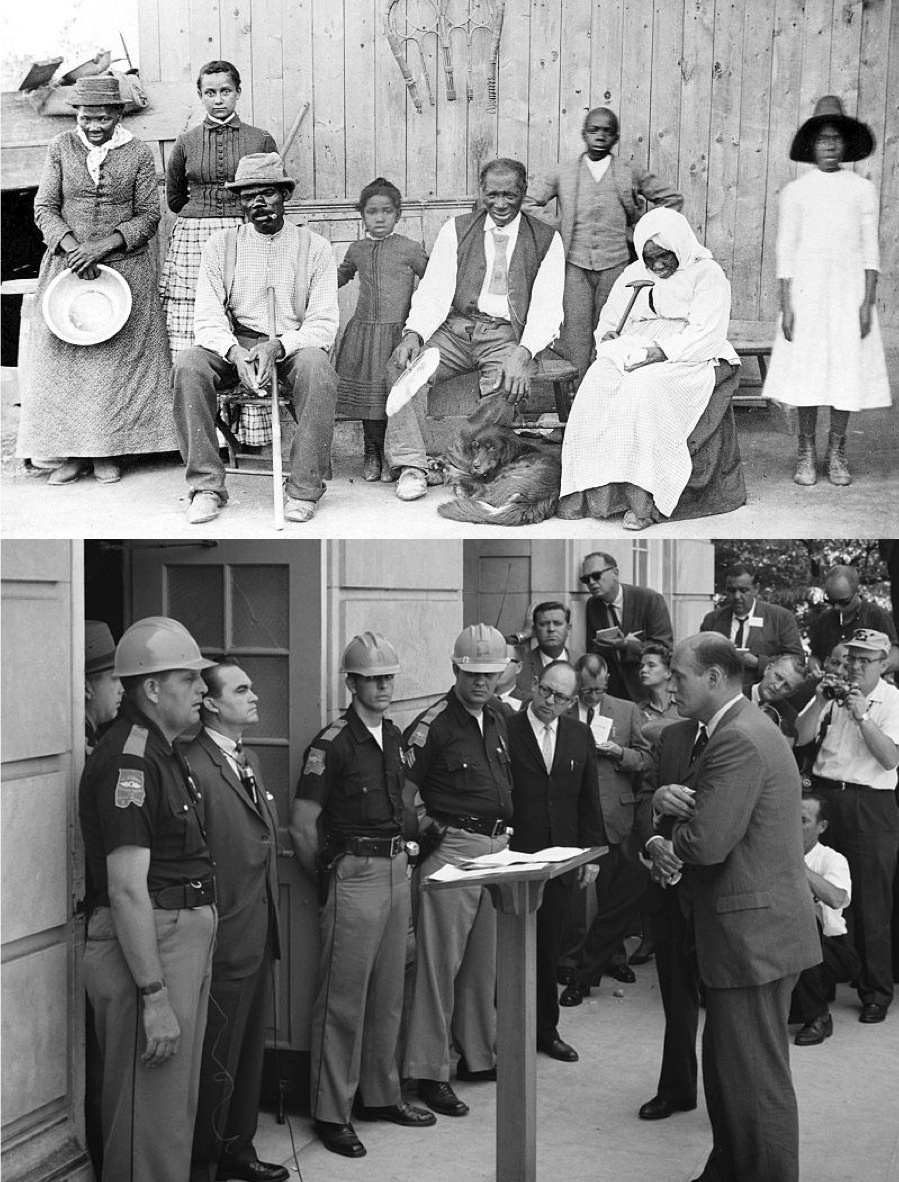Under fire, sanctuary cities draw comparisons to Harriet Tubman, George Wallace

Sanctuary cities have been compared to Harriet Tubman's efforts to help escaped slaves through the Underground Railroad (pictured top; photo by William Cheney via Wikimedia) and to Alabama Gov. George Wallace's resistance to integration at places like the University of Alabama (pictured bottom; photo by Warren Leffler via Wikipedia).
A recent murder in San Francisco has sparked a national debate about sanctuary cities, with opposing sides drawing comparisons to very different chapters in the South's history.
Sanctuary cities are those that, to promote trust and cooperation between police and immigrant communities, have enacted policies that restrict local law enforcement's compliance with Immigration and Customs Enforcement detainer requests for undocumented immigrants. Los Angeles became the first U.S. city to enact a sanctuary policy in 1979 when it banned police from inquiring about the immigration status of arrestees. In the South, Miami, Houston and Orleans Parish, Louisiana are among the places with sanctuary policies.
These policies have faced a wave of criticism since the July 1 shooting death in San Francisco of Kathryn Steinle. Juan Francisco Lopez-Sanchez, an undocumented immigrant from Mexico who had been deported several times, was charged with the murder. Earlier this year Lopez-Sanchez was held in a San Francisco jail on a marijuana charge but was released despite an ICE detainer request because a city ordinance restricts local law enforcement from cooperating with such requests.
Since sanctuary cities represent local resistance to federal policy, they have been compared to the Underground Railroad, a network of safe houses that Harriet Tubman and others used to help Southern slaves escape to the North in the 19th century. Writing recently in the Washington Post, Allan Colbern, a doctoral candidate at the University of California at Riverside, drew parallels between today's sanctuary policies and policies enacted in Northern states to resist federal fugitive slave laws, which required escaped slaves to be returned to their Southern owners:
Today, undocumented immigrants similarly face restrictions on their movements. Federal laws make it a crime for unauthorized immigrants to be in the country and a crime for employers to knowingly hire unauthorized immigrants, and they require proof that someone is here lawfully before they can receive welfare benefits. One way that the federal government enforces these laws is through partnerships with states and localities, including detainer requests to hold people. Much like removal certificates issued to remove runaway slaves, a detainer request today is a formal notice by ICE to federal, state or local law enforcement agencies that it intends to take custody of detainees that ICE believes to be unauthorized immigrants.But the Supreme Court has consistently said that the federal government cannot require state or local cooperation in these efforts.
Meanwhile, other pundits have likened sanctuary cities' policies to the South's resistance to racial integration in the 1960s. In a blog post on The Hill, former diplomat Jim Patterson argued that city leaders enacting sanctuary policies hearken back to Alabama Gov. George Wallace's defiance of the federal government by attempting to uphold racial segregation in the state.
"States and cities should not get to choose which laws they obey," wrote Patterson, who attended segregated schools in Alabama and whose father was an Alabama National Guard soldier sent to help integrate the University of Alabama and to protect voting rights marchers in Selma. "This is the distorted logic of George Wallace from 50 years ago, applied to a different social problem."
However, unlike Southern states' resistance to the federal government's proactive integration measures, the sanctuary city movement is responding to federal inaction: the failure of Congress to pass comprehensive immigration reform. In the face of a broken immigration system, these cities have enacted local fixes to protect and integrate the immigrant community and make their cities safer.
Tags
Allie Yee
Allie is a research fellow at the Institute for Southern Studies and is currently studying at the Yale School of Management. Her research focuses on demographic change, immigration, voting and civic engagement.
